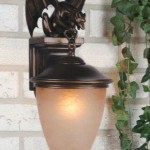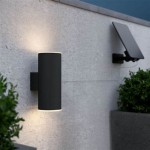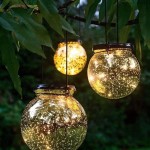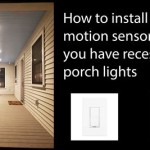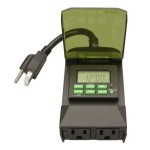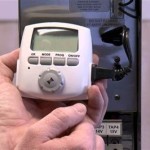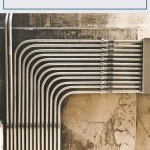Solar Powered Outdoor Lights With Separate Panel
Solar-powered outdoor lights offer a convenient and environmentally friendly way to illuminate walkways, gardens, and other outdoor spaces. A significant advantage of some solar lights is the inclusion of a separate solar panel. This design element offers increased flexibility and efficiency compared to integrated models where the panel is directly attached to the light fixture. This article explores the benefits, features, and considerations associated with solar-powered outdoor lights with separate panels.
Enhanced Sun Exposure and Charging
One of the primary benefits of separate solar panels is the ability to optimize sun exposure. Users can position the panel in the area with the most direct sunlight, even if the light fixture itself is located in a partially shaded area. This independent placement ensures maximum solar energy absorption, leading to faster and more complete battery charging throughout the day. Consequently, the lights can operate for longer periods during the night, providing consistent illumination even in areas with limited direct sunlight during the daytime.
Versatile Placement and Design Options
The decoupled design of separate panel solar lights offers greater flexibility in placement and landscaping. The light fixture can be placed strategically to illuminate specific areas, while the panel can be installed in a location that maximizes sun exposure. This separation also opens up possibilities for more aesthetically pleasing installations. The panel can be mounted on a roof, pole, or wall, keeping it discreetly out of sight, while the light fixture contributes to the overall landscape design. This versatility is particularly beneficial for larger properties or areas with complex landscaping features.
Increased Durability and Longevity
Solar lights with separate panels often exhibit enhanced durability. By isolating the panel, the delicate electronic components of the light fixture are less exposed to the elements. This reduces the risk of damage from rain, snow, or extreme temperatures, which can significantly shorten the lifespan of integrated solar lights. The separate panel design also allows for easier replacement or upgrading of individual components. If the panel or the light fixture malfunctions, only the affected part needs to be replaced, reducing overall maintenance costs and extending the system’s useful life.
Panel Size and Power Output Considerations
When selecting solar lights with separate panels, it's essential to consider the panel size and its power output. Larger panels generally generate more electricity, allowing for brighter lights and longer operating times. The power output is typically measured in watts and directly affects the charging capacity and the brightness of the light emitted. Carefully assess the lighting needs of the intended area and choose a panel size and wattage that will provide sufficient illumination.
Cable Length and Installation
The cable length connecting the solar panel to the light fixture is another important consideration. Ensure the cable is long enough to reach the desired placement for both the panel and the light. Longer cables provide greater flexibility but may also introduce voltage drop, reducing the efficiency of the system. During installation, ensure the cable is properly secured and protected from damage to prevent tripping hazards and ensure long-term performance.
Battery Capacity and Type
The battery capacity determines how long the lights can operate after a full charge. Higher capacity batteries, typically measured in milliampere-hours (mAh), can store more energy, enabling longer illumination times. The type of battery also influences performance. Lithium-ion batteries generally offer better performance and longevity compared to other battery chemistries, such as nickel-cadmium or nickel-metal hydride. Consider the typical sunlight hours in your location and the desired lighting duration when choosing a battery capacity.
Weather Resistance and Durability
Outdoor solar lights are exposed to various weather conditions. Ensure the chosen lights have an appropriate Ingress Protection (IP) rating. This rating indicates the level of protection against dust and water ingress. A higher IP rating indicates better protection against the elements. Look for lights with a rating of at least IP65 for reliable outdoor use. Additionally, consider the materials used in the construction of both the light fixture and the solar panel. Durable materials such as aluminum or stainless steel can enhance the longevity of the system.
Outdoor Dual Ground Solar Spot Light With Separate Panel
12v Solar Lighting System Durasol Low Voltage Outdoor Kit
Lepro Solar Lights For Outside Wl5000 Motion Activated Security Separate Panel 3 Adjustable Head 270 Wide Lighting Angle Ip65 Waterproof Wall Lamp Porch Yard Garage Com
228led Outdoor Solar Lights Separate Panel Spot Light With Remote Control Super Bright Motion Sensor Garden Wall Ip65 Waterproof For Patio Backyard Lighting From Dusk To Dawn
Outdoor Solar Separate Panel Powered Spot Light 200 Led Super Bright Motion Sensor Power Garden Wall Ip65 Waterproof 3 Working Modes Dusk To Dawn Lighting For Patio Backyard
Led Solar Split Street Light Outdoor Waterproof Separate Panel With Controller China Lamp Made In Com
Meihong Solar Spotlight Separate Panel 21 Led Waterproof Outdoor Landscape Lights Dusk To Dawn 2 In 1 Powered Accent Wall For Garden Porch Walkway Patio White Light Com
Ip65 Low Outdoor Led Split Solar Street Light High Power Separated Panel 50w 100w 150 Watts With Remote Control China Lamp Made In Com
228led Outdoor Solar Lights Separate Panel Spot Light With Remote Control Super Bright Motion Sensor Garden Wall Ip65 Waterproof For Patio Backyard Lighting From Dusk To Dawn
Outdoor Dual Ground Solar Spot Light With Separate Panel
Related Posts
